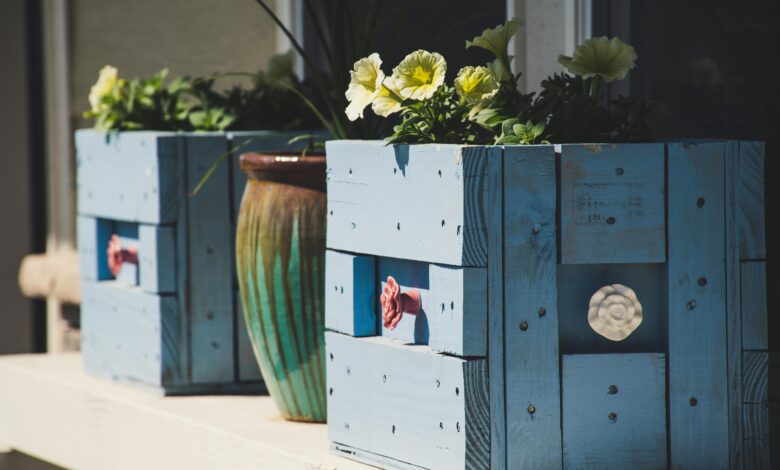Building Stronger Foundations: 7 Waterproofing Solutions Every DIY Enthusiast Should Know

Waterproofing is an essential aspect of construction and home improvement, particularly when it comes to creating robust and long-lasting foundations. For DIY enthusiasts, understanding the principles and effective techniques is crucial to achieving professional-grade results. Whether you’re working on a basement, outdoor patio, or bathroom renovation, it ensures your projects are protected against moisture-related damage and remain durable for years to come.
This blog delves into the importance of waterproofing and highlights some key solutions that every DIY enthusiast should know to build stronger foundations.
Why Waterproofing Matters in DIY Projects
It is more than just an extra layer of protection—it’s a fundamental step that prevents water infiltration, which can compromise the structural integrity of your project. Even small amounts of moisture can lead to significant issues over time, including:
- Cracking and warping: Water infiltration can cause materials like concrete and wood to expand and contract, leading to cracks and structural deformities.
- Mould and mildew growth: Persistent dampness fosters mould, which can damage surfaces and pose health risks.
- Corrosion: Metal components, such as reinforcements or fittings, are susceptible to rust and degradation when exposed to moisture.
- Reduced durability: Unchecked water damage can shorten the lifespan of your project, resulting in frequent repairs or replacements.
For DIY enthusiasts, waterproofing is an opportunity to ensure that your hard work stands the test of time. By incorporating effective waterproofing solutions, you can protect your investment and enhance the quality of your projects.
Waterproofing Basics: Key Concepts
Before diving into specific solutions, it’s important to understand the core principles of waterproofing. Waterproofing involves creating a barrier that prevents water from penetrating surfaces or materials. This barrier can be achieved through a variety of methods, including:
- Liquid-applied membranes: These are seamless coatings that form a flexible, waterproof layer when cured.
- Sheet membranes: Pre-fabricated sheets applied to surfaces to block moisture.
- Cementitious coatings: Cement-based products used to seal porous surfaces like concrete.
- Sealants: Used to fill gaps, joints, and cracks to prevent water ingress.
Each method has its strengths and is suitable for different applications. Choosing the right solution depends on the area you’re working on, the materials involved, and the level of water exposure expected.
DIY Waterproofing Solutions for Stronger Foundations
1. Preparing the Surface
Proper preparation is the foundation of effective waterproofing. Ensure that the surface is clean, dry, and free from debris, grease, or loose materials. For concrete surfaces, repairing cracks and filling gaps with a suitable filler is crucial before applying any waterproofing product. Sanding or priming the surface may also be required for better adhesion.
2. Liquid-Applied Waterproofing Membranes
Liquid-applied membranes are a versatile solution for DIY waterproofing. These coatings are applied with a brush, roller, or spray and form a seamless barrier when cured. They are particularly effective for irregular surfaces or areas with complex shapes, such as corners and edges.
Liquid-applied membranes are ideal for:
- Basement walls
- Roofs and terraces
- Bathroom floors and walls
Ensure multiple coats are applied for thorough coverage, allowing each layer to dry completely before adding the next.
3. Cementitious Waterproofing Coatings
Cementitious waterproofing products are a popular choice for sealing concrete surfaces. These coatings are easy to apply and provide excellent resistance to moisture. They are commonly used in:
- Basements and foundations
- Water tanks and swimming pools
- Outdoor patios
Cementitious coatings are mixed with water or a bonding agent and applied with a brush or trowel. They penetrate the pores of concrete, creating a watertight barrier that also strengthens the surface.
4. Sheet Waterproofing Membranes
For areas requiring robust and consistent protection, sheet membranes are an excellent option. These pre-fabricated sheets are applied to surfaces using adhesive or heat, forming a durable barrier against moisture.
Sheet membranes are ideal for:
- Foundations and retaining walls
- Under-tile waterproofing in bathrooms and kitchens
- Flat roofs
While installation requires careful alignment and sealing of overlaps, sheet membranes are a reliable choice for projects exposed to high levels of water pressure.
5. Waterproofing Tapes and Sealants
Joints, seams, and cracks are the most common entry points for water. Using waterproofing tapes and sealants ensures these vulnerable areas are thoroughly protected. Waterproof tapes are flexible and self-adhesive, making them easy to apply to gaps and corners. Sealants, such as silicone or polyurethane, are ideal for filling cracks and joints.
These products are particularly useful in:
- Window and door frames
- Bathroom and kitchen joints
- Pipe penetrations
6. Using High-Performance Products
Selecting high-quality waterproofing materials is essential for achieving durable results. For example, products like those in the Denso range are trusted for their superior performance in protecting against water ingress, corrosion, and environmental wear.
High-performance products provide better adhesion, flexibility, and resistance to wear, ensuring your project remains watertight and secure.
Tips for Successful DIY Waterproofing
1. Plan Ahead
Understand the specific requirements of your project and choose the appropriate waterproofing solutions. Create a step-by-step plan, ensuring you have all the necessary tools and materials before starting.
2. Apply Evenly
Whether using liquid membranes, coatings, or sheets, ensure even application to avoid weak spots. Overlap sheets and apply additional coats in high-risk areas for added protection.
3. Allow for Drying Time
Patience is key to effective waterproofing. Allow each layer or product to dry completely before moving on to the next step. Rushing the process can compromise the barrier’s integrity.
4. Focus on Details
Pay close attention to corners, edges, and joints, as these are common points of water infiltration. Use tapes, sealants, or extra layers to reinforce these areas.
5. Test the Waterproofing
Once the application is complete, test the waterproofing by exposing the surface to water or conducting a flood test (where applicable). This ensures there are no leaks or weak spots before finishing the project.
Common Mistakes to Avoid
- Skipping surface preparation: Poorly prepared surfaces lead to weak adhesion and ineffective waterproofing.
- Using low-quality products: Inferior materials may save money initially but often fail to provide lasting protection.
- Ignoring drying times: Rushing the process can result in uneven or incomplete coverage.
- Overlooking joints and cracks: These areas are the most vulnerable to water ingress and require extra attention.
Conclusion: Build Stronger, Lasting Foundations
Waterproofing is a vital step in any DIY construction or renovation project. By using the right solutions and following best practices, you can ensure your work remains durable, functional, and protected against the elements. From liquid-applied membranes to sheet systems and high-performance products like Denso, the range of options available makes it easier than ever for DIY enthusiasts to achieve professional results.
With proper planning, attention to detail, and the right materials, you can build stronger foundations and create projects that stand the test of time. Whether working on a small bathroom renovation or a larger outdoor project, waterproofing is the key to lasting success.


